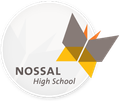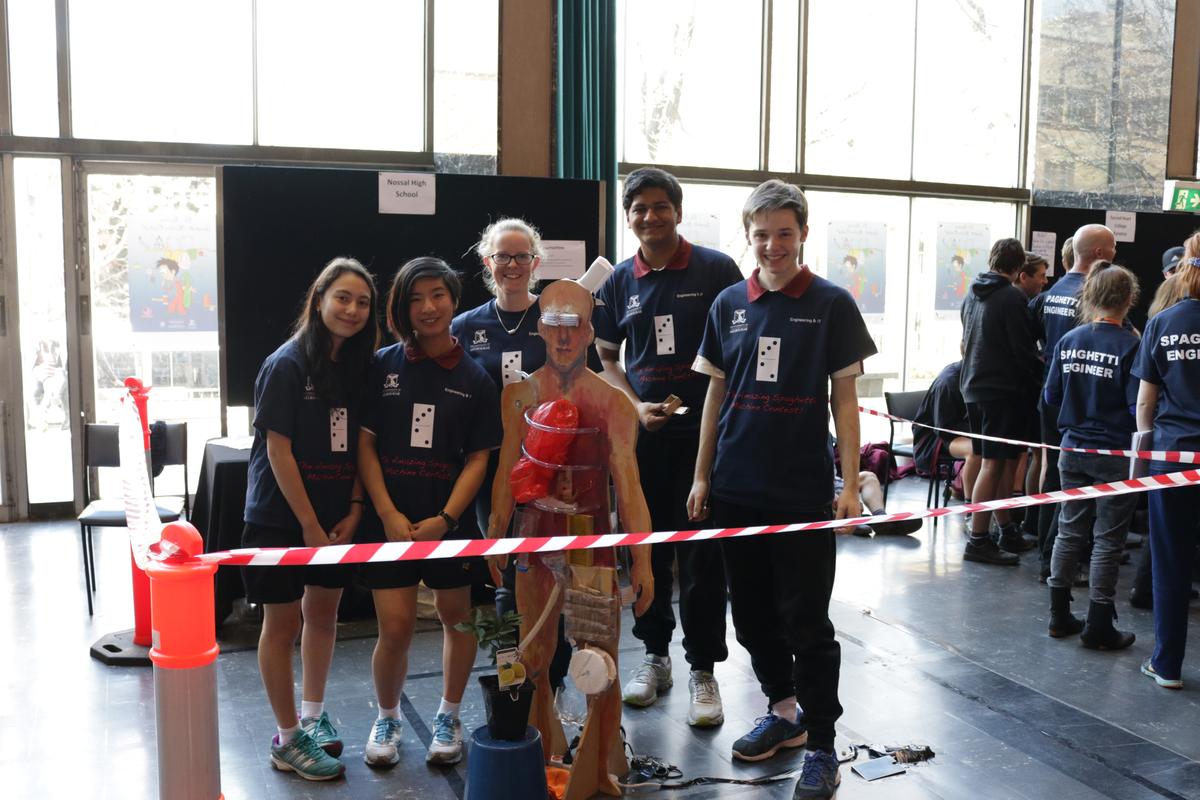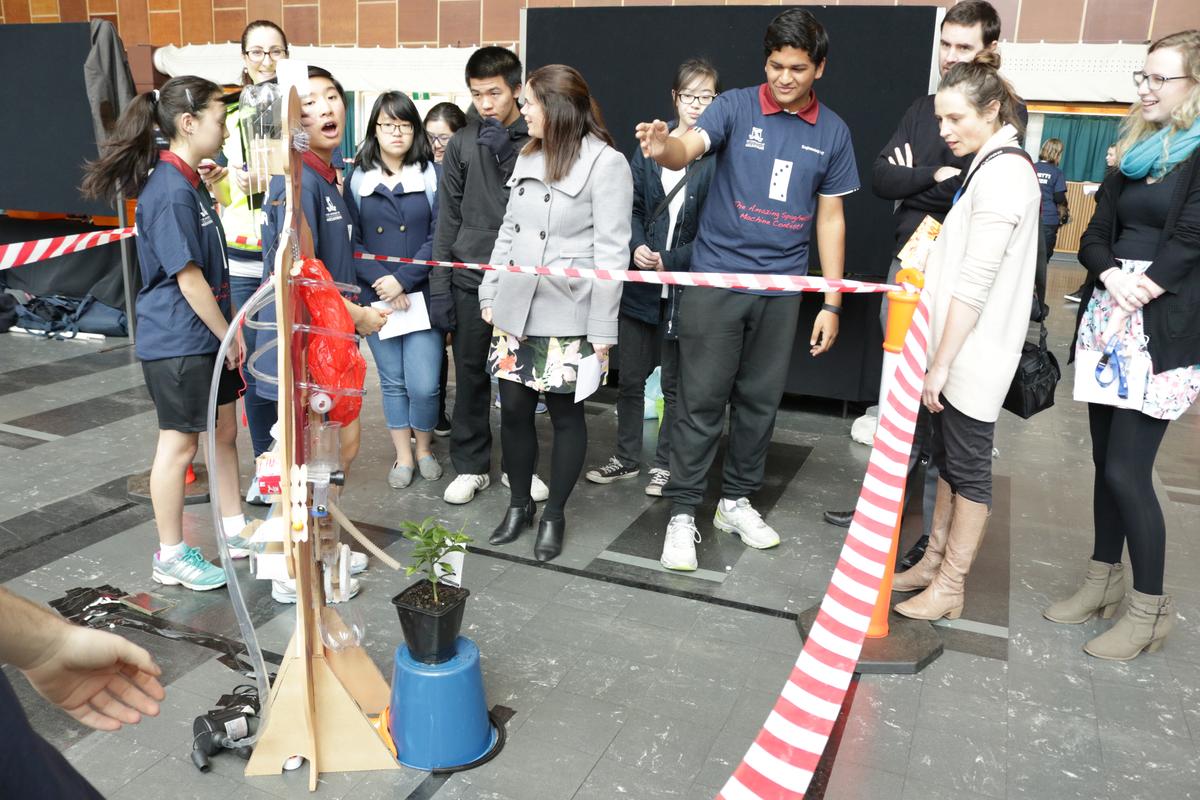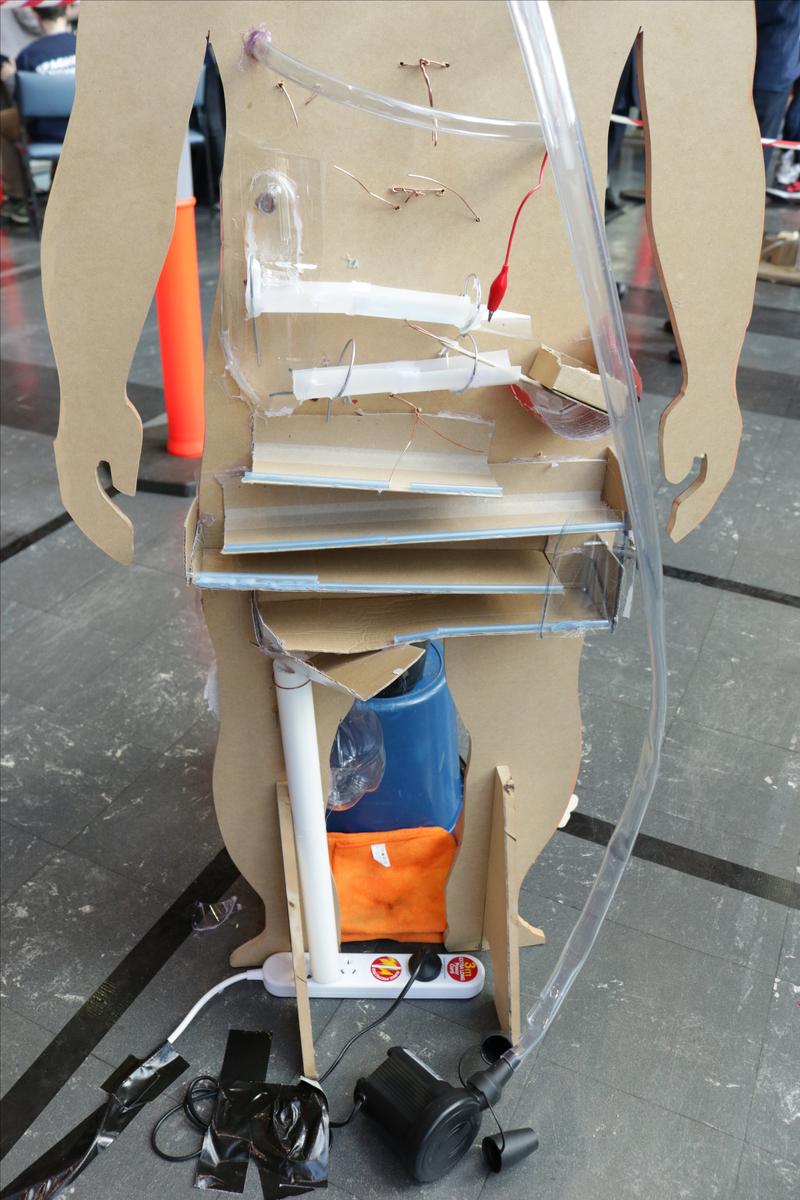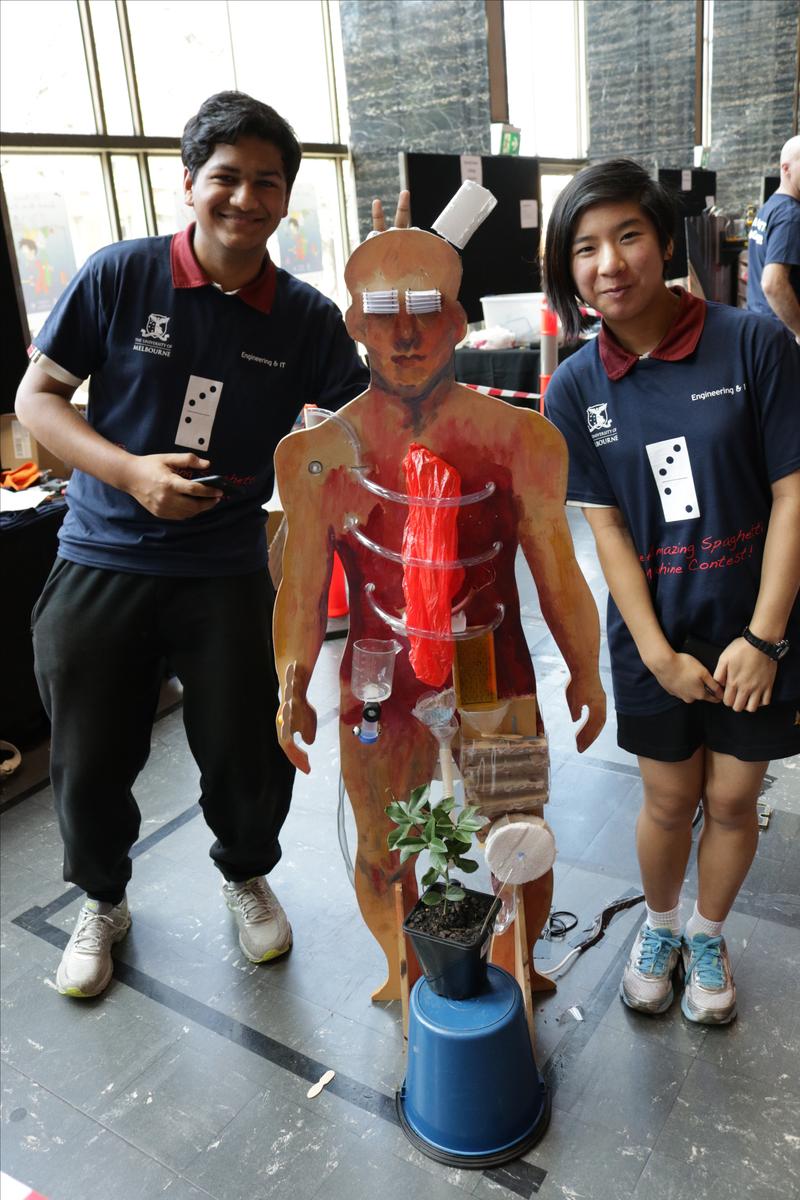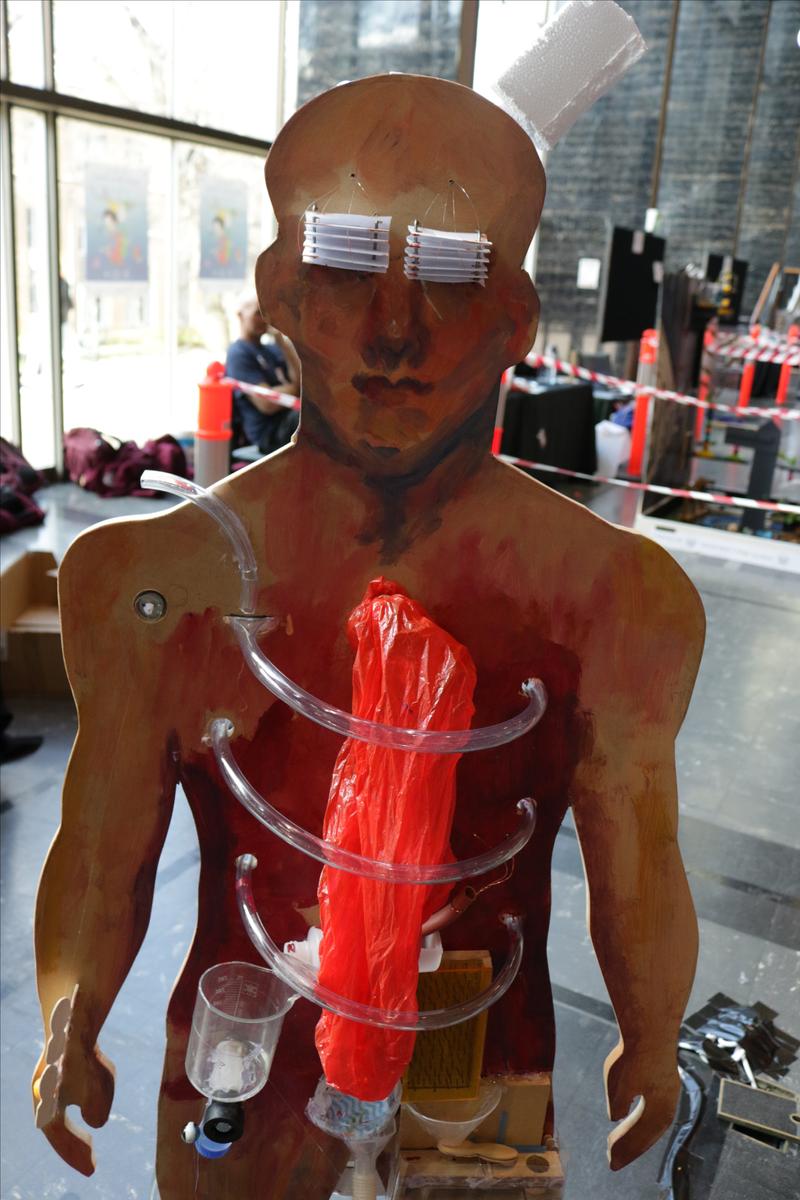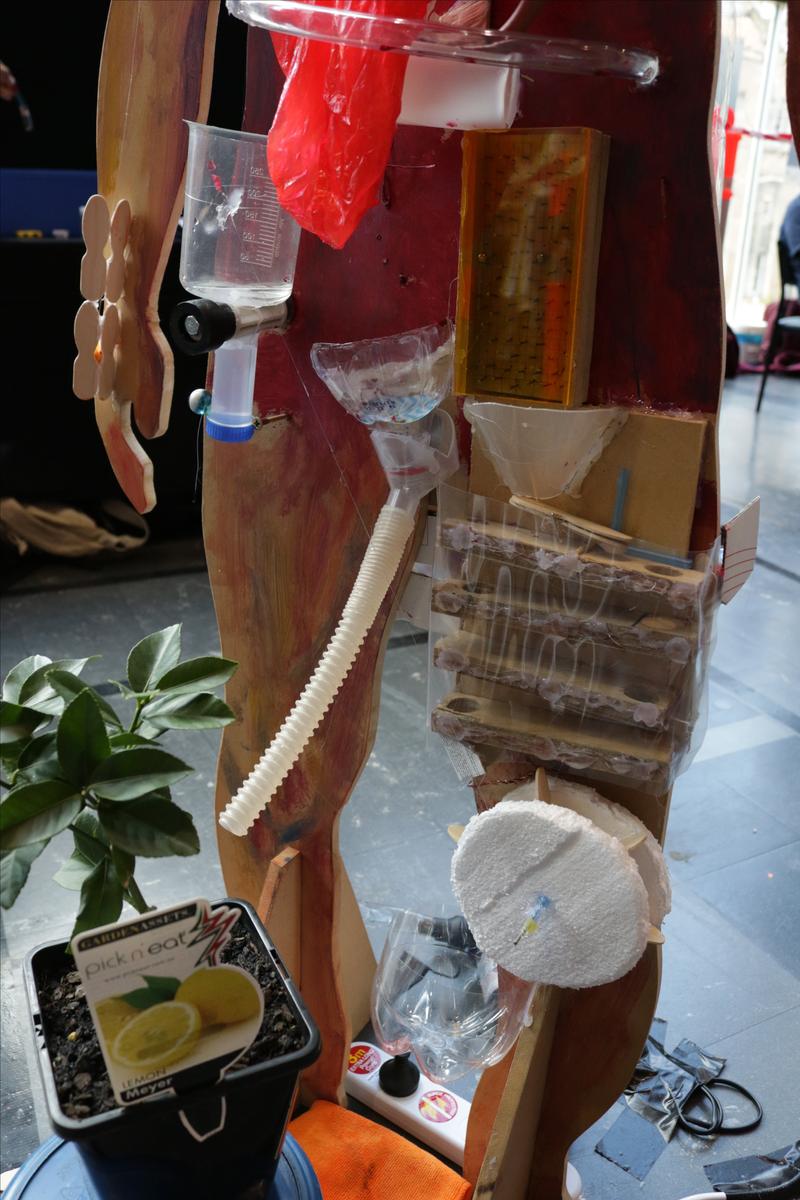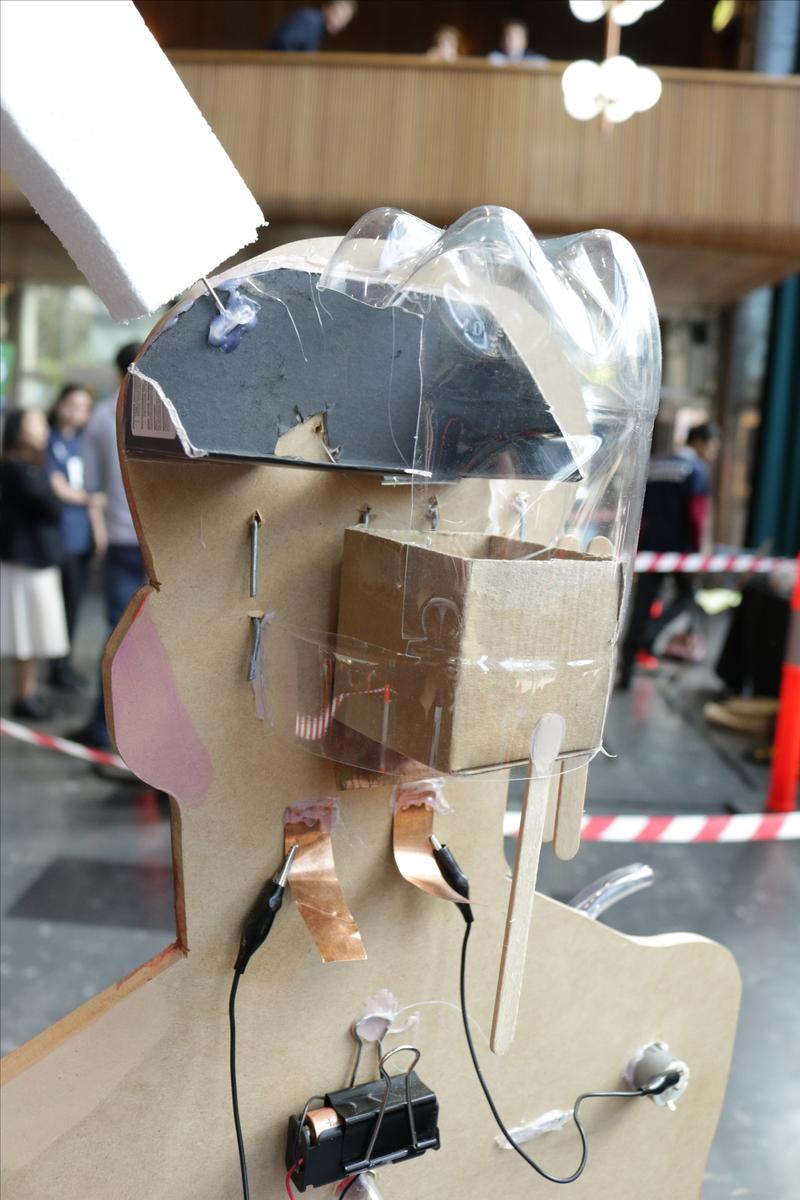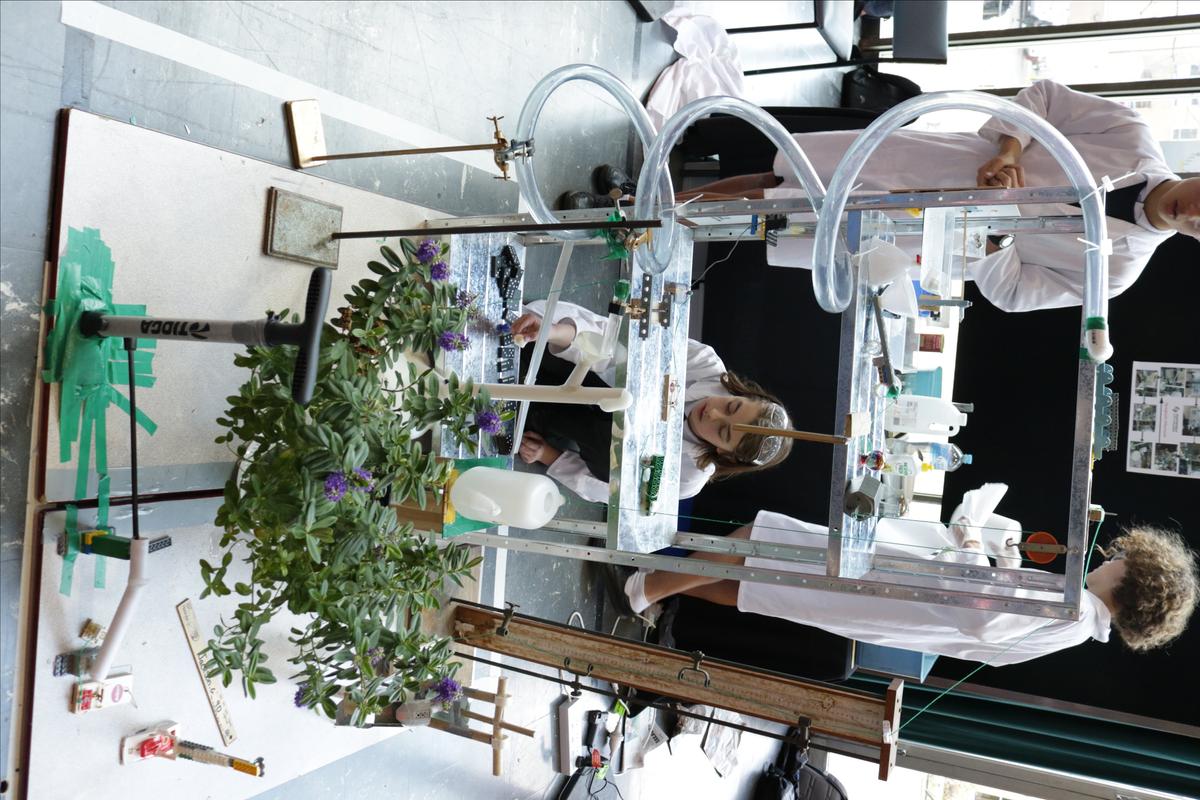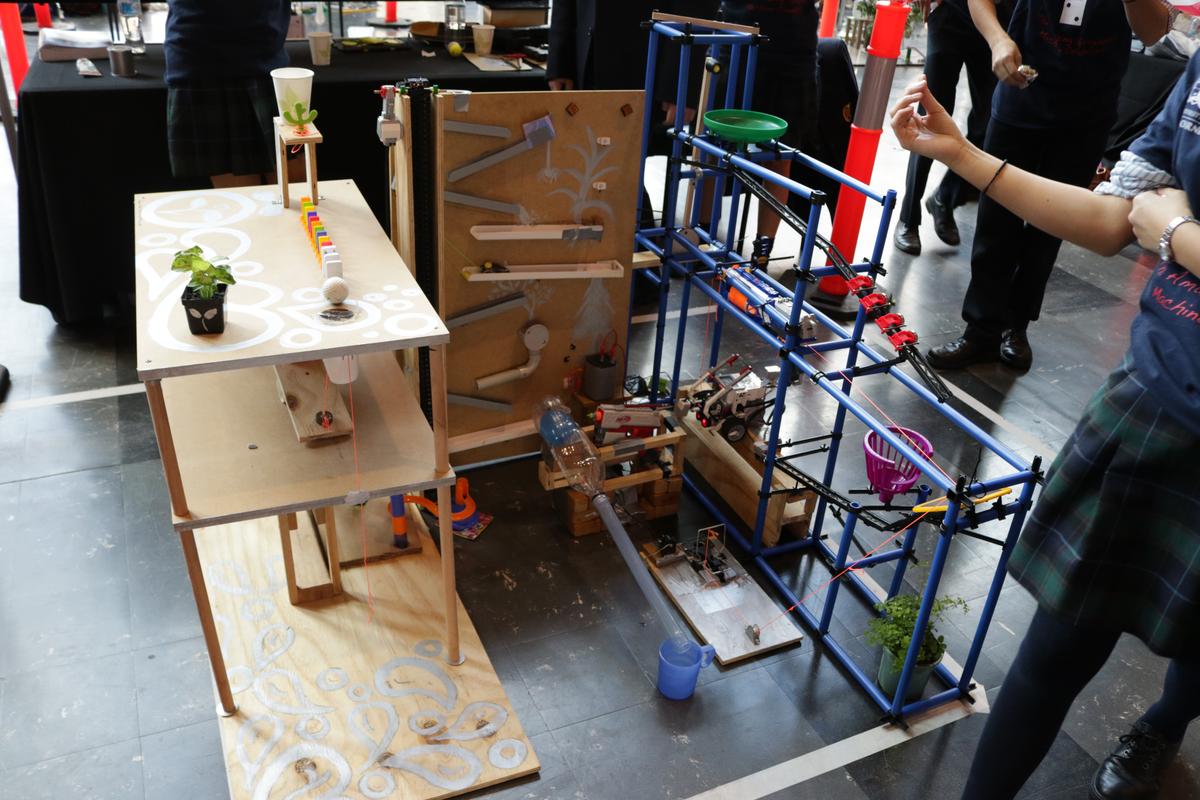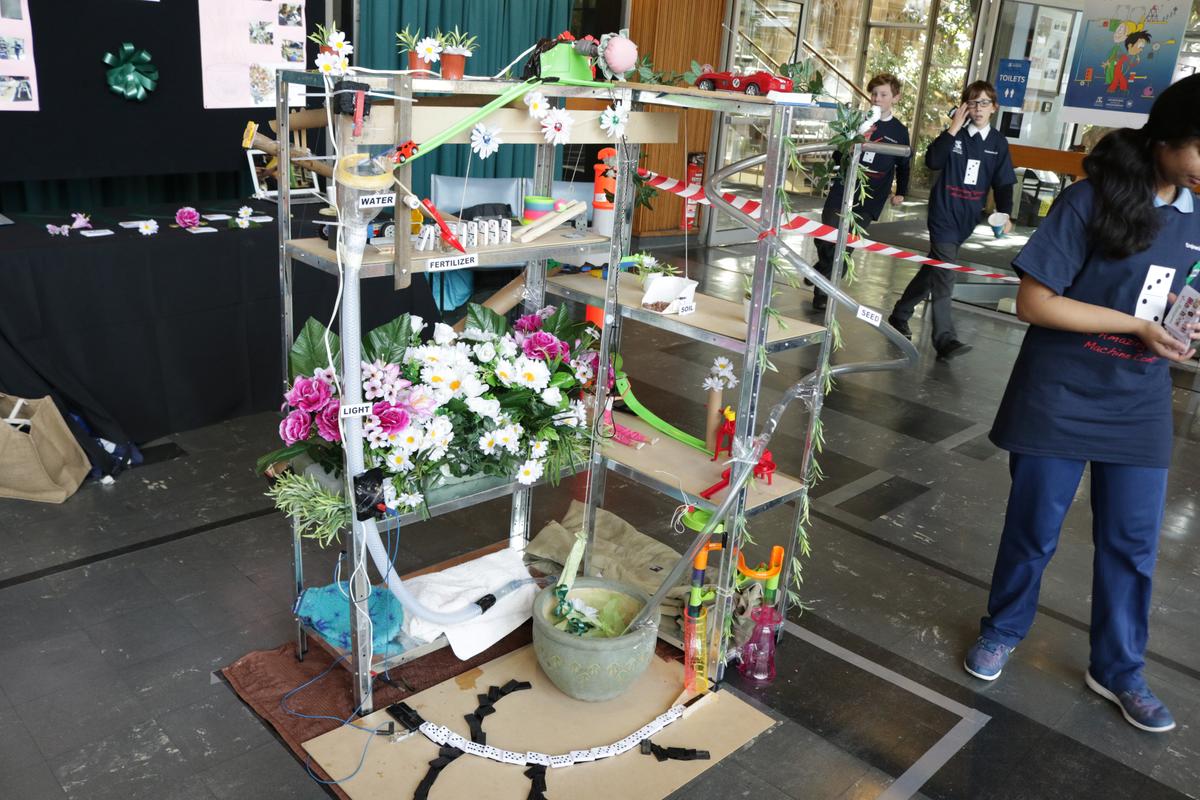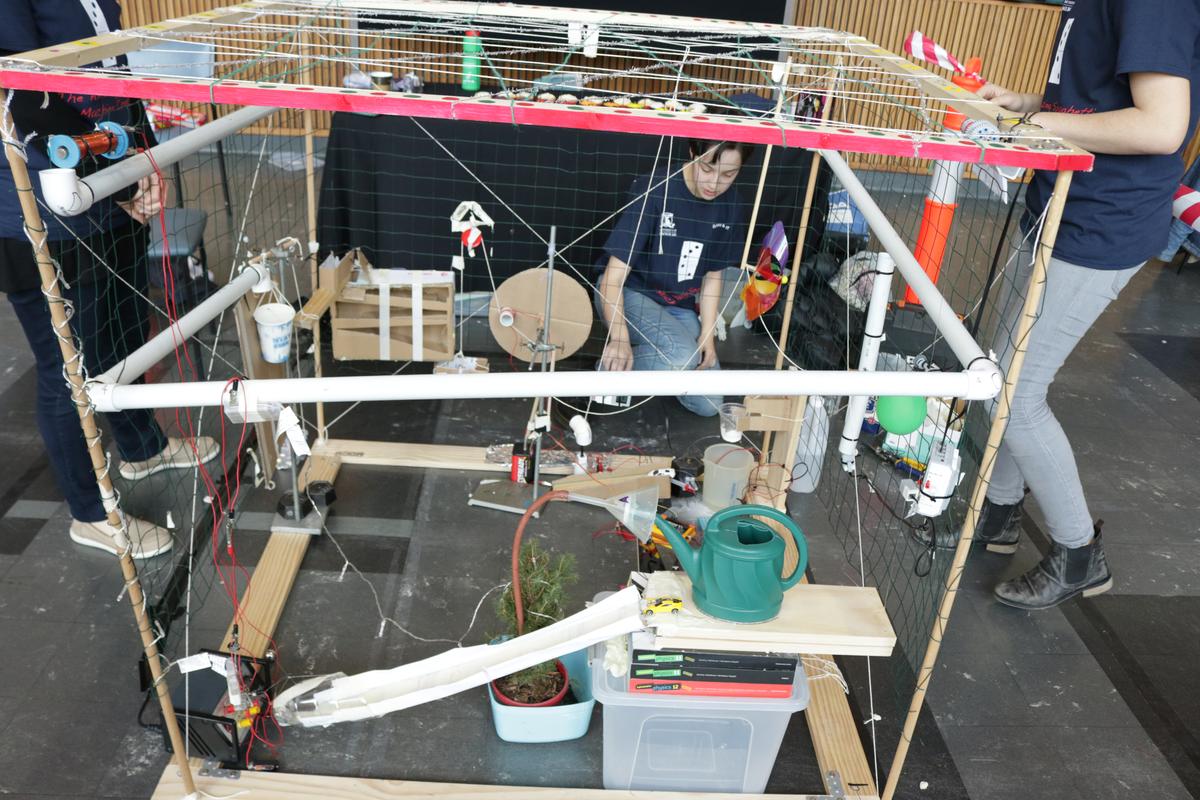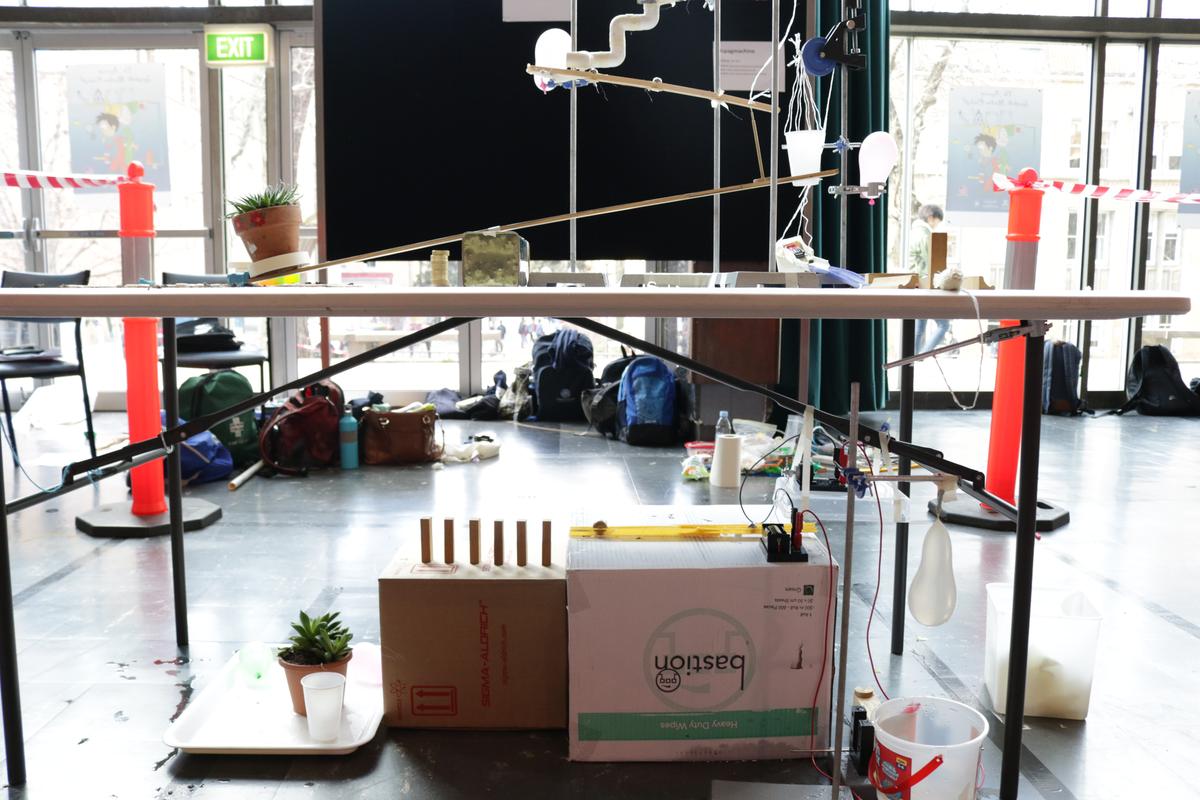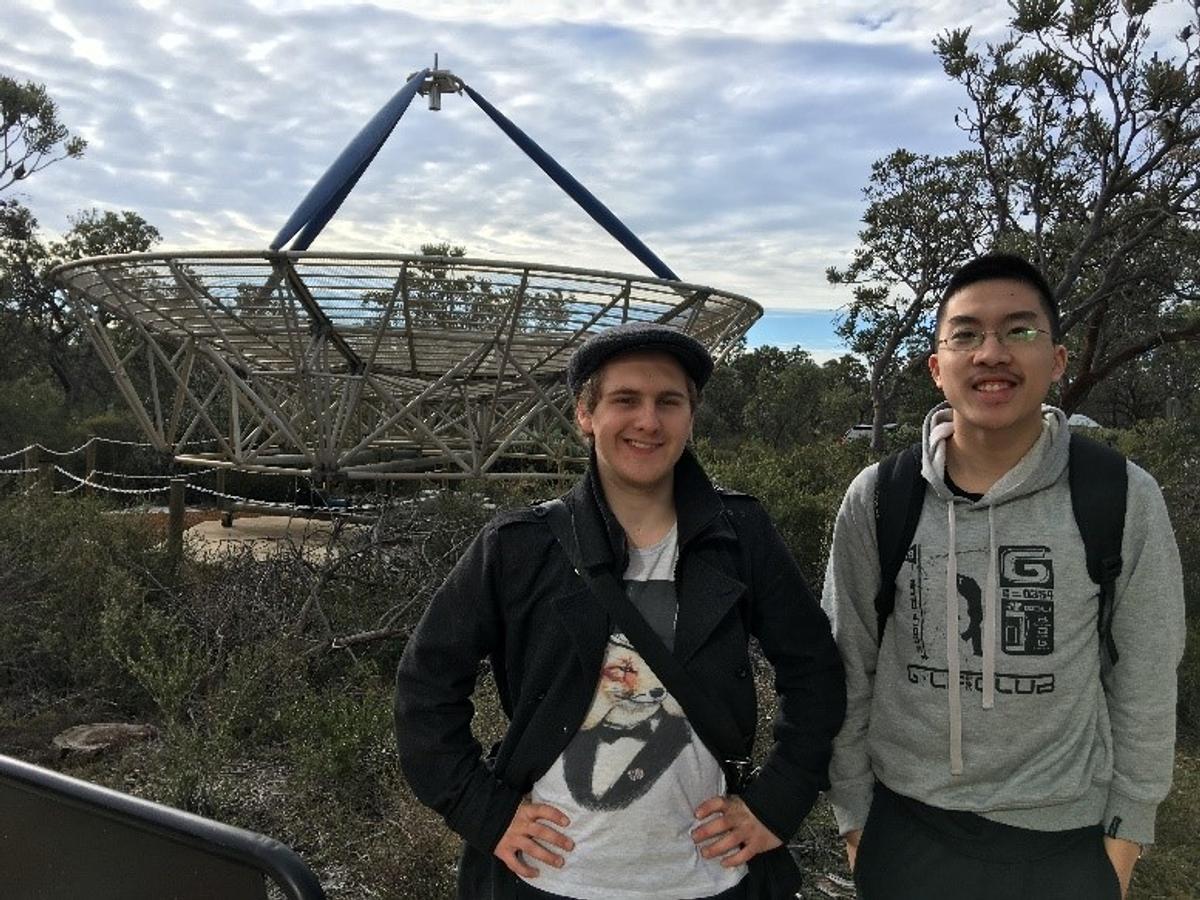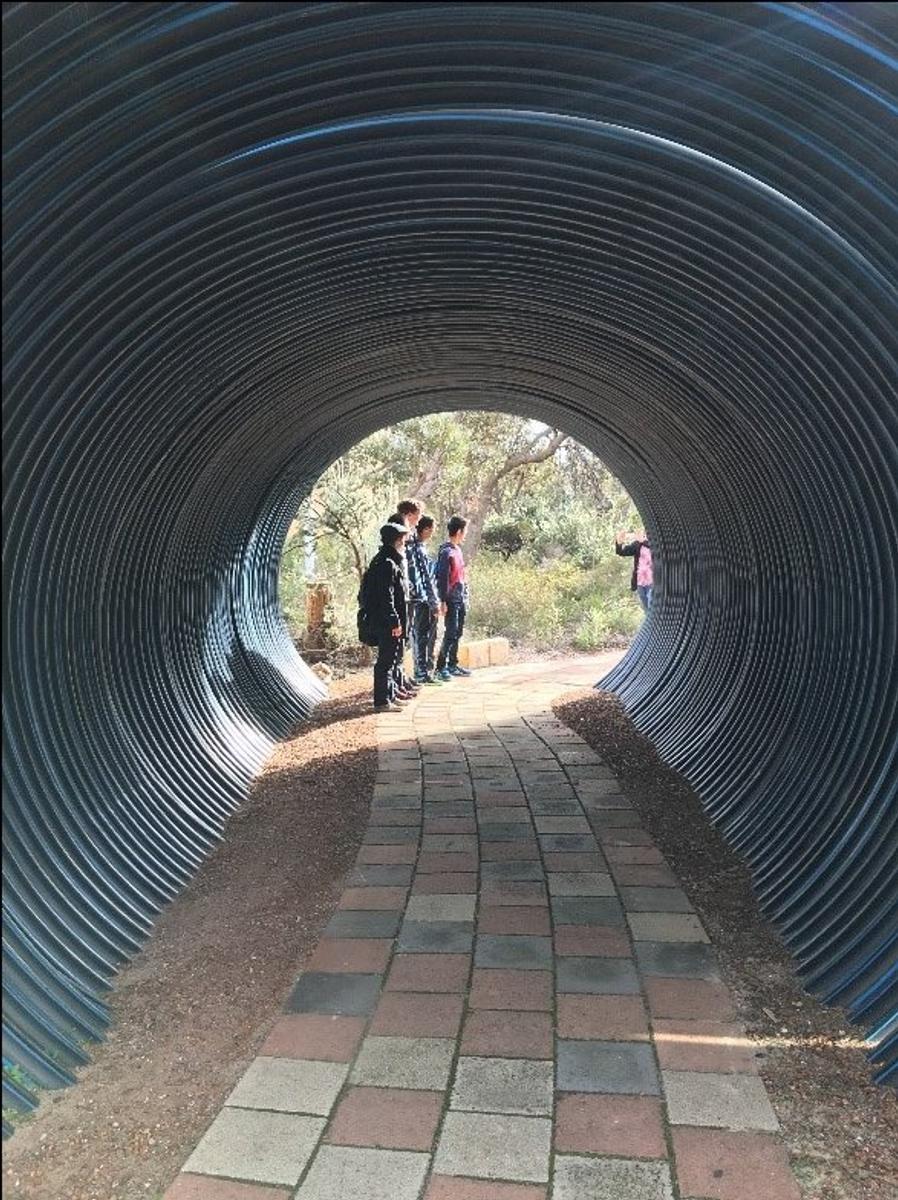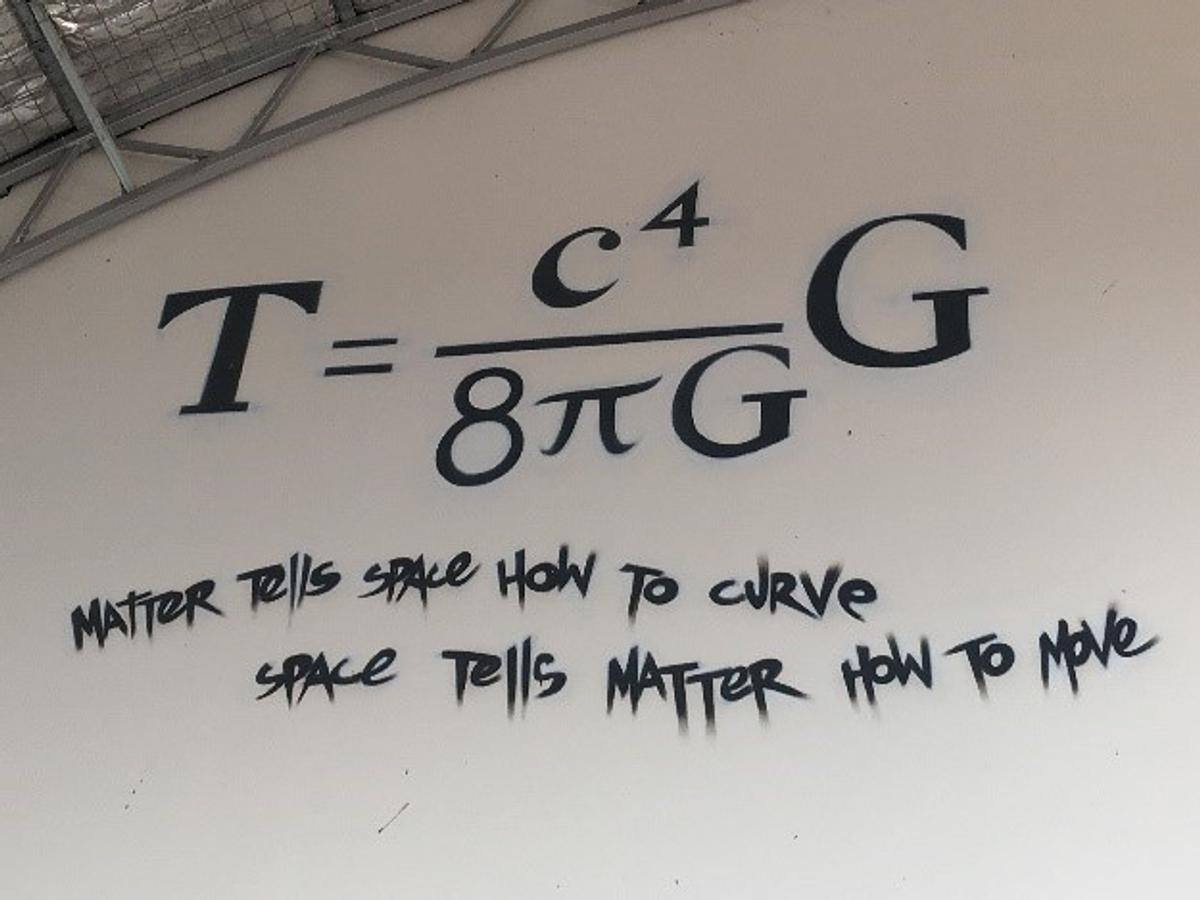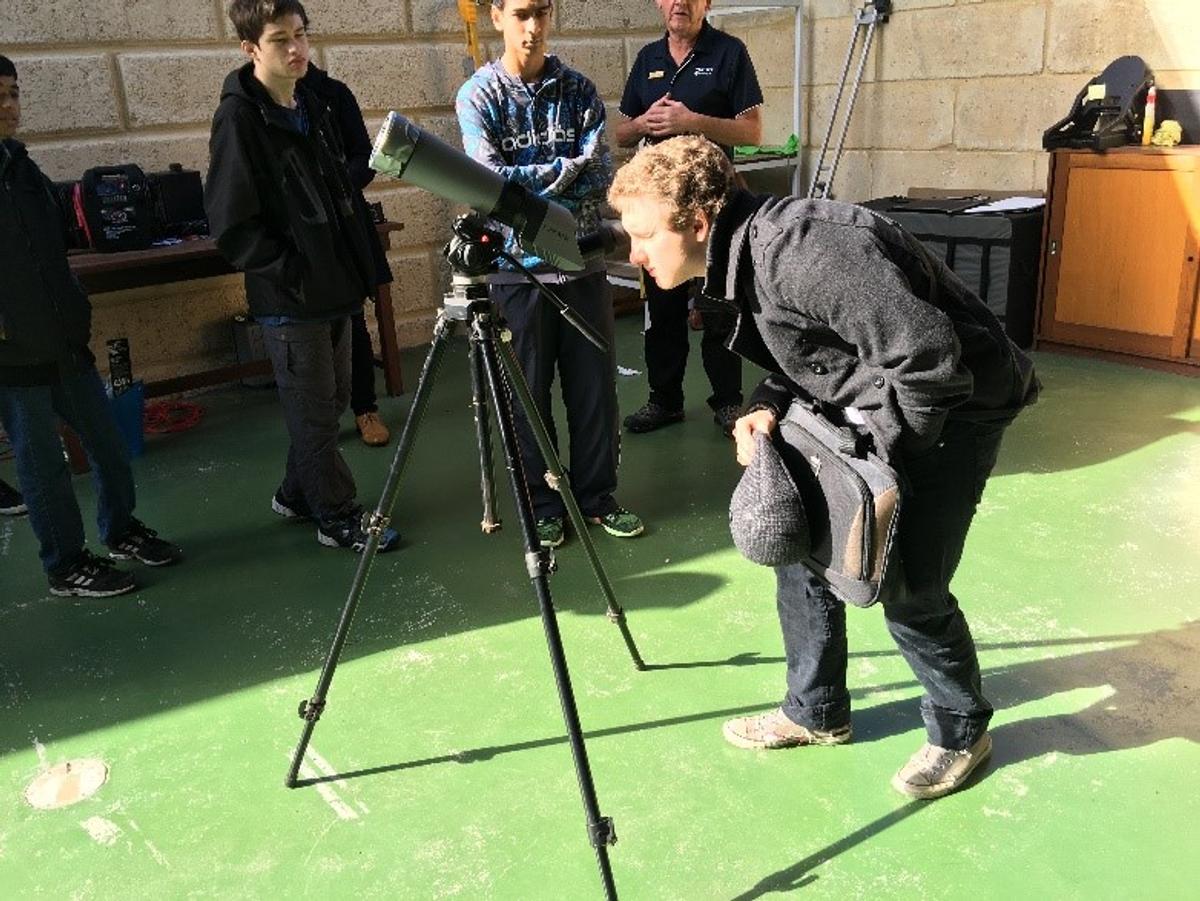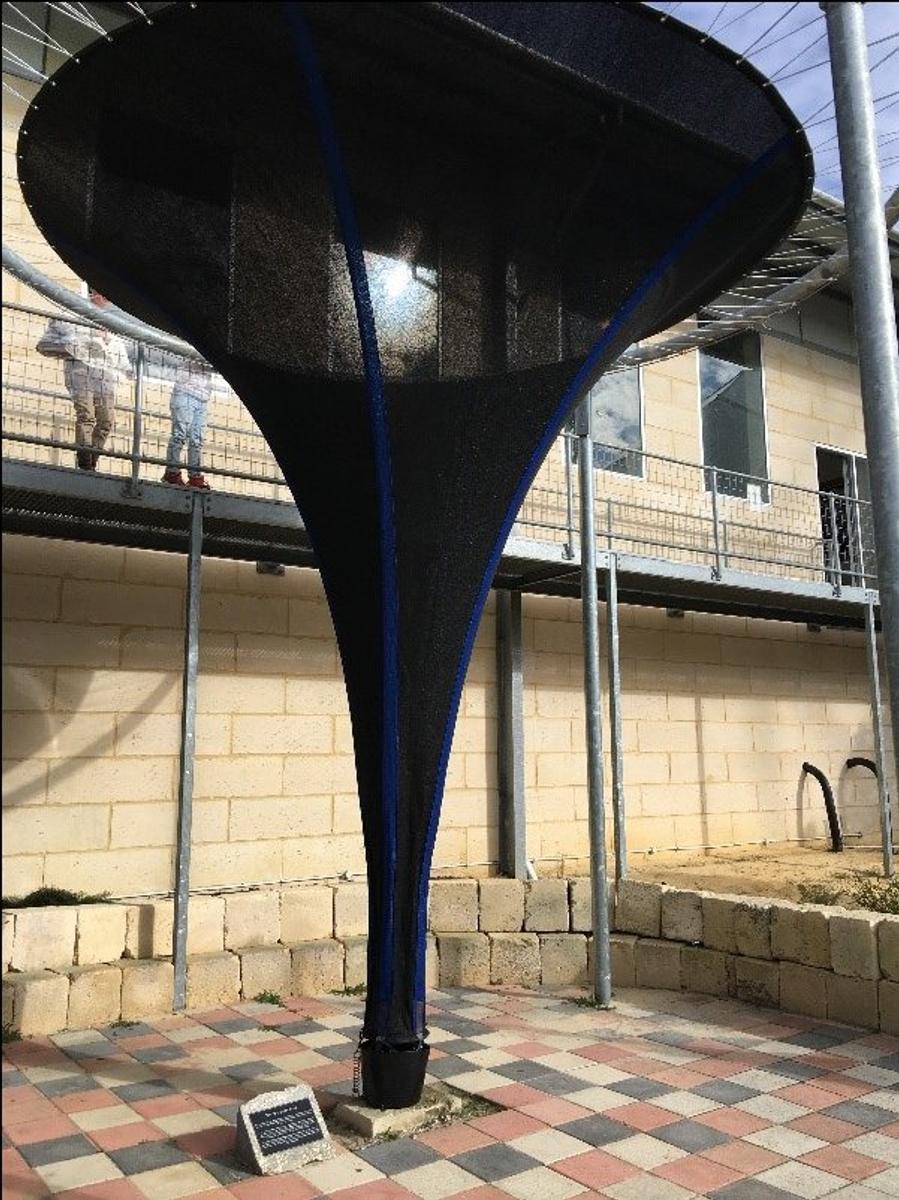Science News

The Amazing Spaghetti Machine Competition
Mario. This was the name of our amazing spaghetti machine, he was to be presented to the University of Melbourne for the annual Amazing Spaghetti Machine Contest for 2016. Creative, isn’t it? Although the name may sound interesting, over the last few months, I, and three other students have been honoured to compete in this competition.
The aim of the contest was to come up with a complicated machine, called a spaghetti machine, which in the end does a simple task. Starting in June, Ms Bonham, and the spaghetti engineers ventured to create a Rube Goldberg machine that in the end, watered a plant. Once Charlotte, one of our team members, came up with the idea of a man, ahem, urinating on a plant to water it, we were set! With the use of motors, wheels, pipe, bags, and a lot of wire, I finally discovered how exciting the world of engineering actually was.
Throughout the preparation weeks we hit many hurdles such as the machine being too short in time (as we had to have a thirty-second-long process), the parts being temperamental, and the issue of water being spilt to disrupt the electronics. But, on the sunny morning of August 11, Melbourne University was delighted to see our contraption. The judges and teachers from many schools were impressed at the workings of Mario and we were proud to receive the prize of being the most creative machine in the competition.
Throughout this process, Charlotte, Broden, Kimiko, and I have had our eyes opened to the world of engineering and IT and would all like to thank Ms Bonham, Mr Bramich, and Ms Lees for putting countless hours of work into our machine and allowing us to compete in this competition.
I also would like to strongly encourage students to compete in this competition next year as it is an amazing opportunity to receive an insight to engineering at Melbourne University.
Aditya Gadgil - Year 10
National Schools Alliance - Perth
Over the term two break, and leading up to Science Week, two students from Year 11, Paul and myself (William) went with Ms Campagna and a group from John Monash Science School (JMSS) to Perth for the National Schools Alliance program hosted by Shenton College.
We met up with students and staff from Shenton to explore a range of the scientific and technological advancements which are taking place in Western Australia. It was a good trip, but getting there was not an incredibly fun experience, as our plane was delayed 8 hours. This meant we arrived where we were staying around midnight. The accomodation we stayed at were these three nice little beach chalets, so Paul and I got to get to know the two boys from JMSS fairly well in the end. The chalets were literally 50 metres away from the beach and the views were quite spectacular. Perth is a very beautiful city, with it’s gorgeous waterfront and mix of modern and heritage buildings. We also had the chance to visit the Fremantle Maritime Museum and have a look around in a submarine.
Of course we weren't just there to admire the sights of Perth, we were also there to explore the rich scientific research taking place. We visited the Gravity Education centre at Jin Jin, where some of the best telescopes in the country can be found and had the opportunity to explore and interact with scientific exhibits. Some of the research that was done into the discovery of Einstein's gravity waves was done there and it is also where the prototypes of the machines used to detect it were created. We learned how this discovery was made possible with the collaboration between Australian scientists and those at LIGO in the United States. Dr. Warren Stannard presented a special lecture for us on Einstein's theory in relation to gravity waves and the Einstein First project.
We also learned about some of the medical research done in conjunction with University of Western Australia and the Young Scientists program, and visited a DNA testing facility at Sir Charles Gairdner Hospital.
Overall there were a lot of interesting things to see while in Perth and we learnt a lot from all the people working in Science that we had the opportunity to speak with.
William Orrell - Year 11
Future Problem Solvers at Nossal
‘So everyone, today you are going to try to solve Kiribati’s natural disaster problem, in two hours.’ Yes, these were the words that were said to myself and seven other students as we competed against schools around the world in the annual Future Problem Solving Program for 2016. But, let me first take a step back to establish how we got to this moment….
The preparation for this competition began more than a month ago when Ms Campagna and Ms Chapple notified us about a new competition aiming to change the world that was coming to Nossal this year. I quickly jumped to the opportunity, as many of my teammates did, and it took us on a journey to discover the planet around us. For weeks we completed practice problems, had question and answer sessions, and many lectures from the teachers during which they gave us insightful resources on these issues which helped to prepare us for this day.
However, when we got a perspective on what we had to complete in those two hours, I was astonished. We had discovered that in the two hours of the competition we had to, and brace yourself, find sixteen problems regarding a situation, then find an underlying problem from those sixteen, then find sixteen solutions to that underlying problem, choose the eight best, evaluate those eight, and then choose the most successful for which an action plan had to be written. Yes, it’s a lot of work! I felt as though that time was very influential for me as I found out that such issues cannot be solved in just two hours. We all discovered that there are problems in this world which are much greater than we think they are. And, that it is the duty of us, as leaders of the future, to solve them.
Therefore, I would like to thank Ms Campagna and Ms Chapple for organising this competition and I strongly encourage students to partake in this competition next year to discover a world of change.
Aditya Gadgil – Year 10
